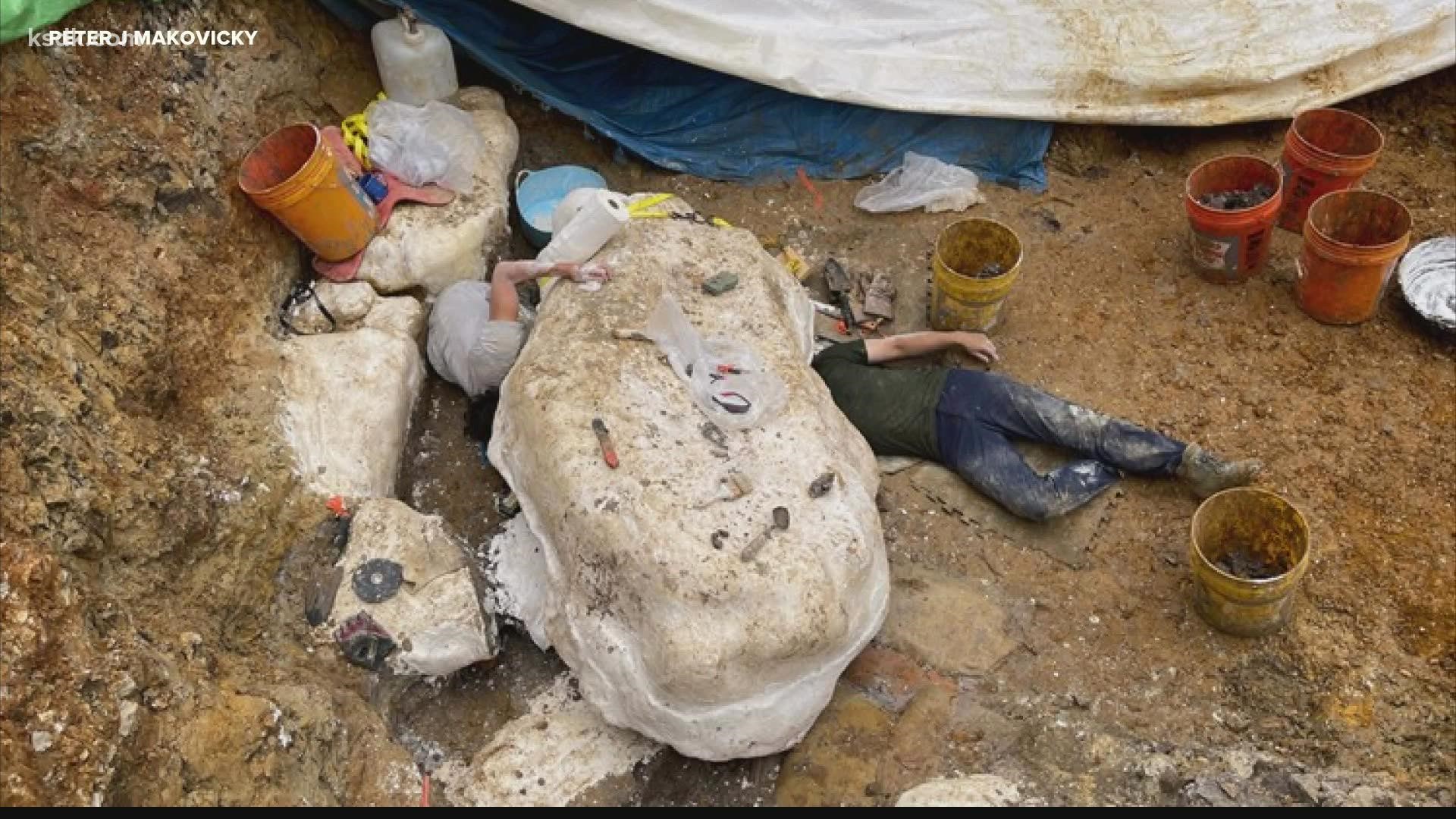BOLLINGER COUNTY, Mo. — Finding the fossils of a large duck-billed dinosaur in southern Missouri is exciting enough, but a paleontologist who helped lead the dig believes there are many more in the same area.
The latest fossils are a specimen of Parrosaurus missouriensis, first discovered at the same site in Bollinger County nearly 80 years ago but not confirmed as a new species until the latest dig. Experts believe the plant-eating dinosaurs grew to around 35 feet in length. Remains of four of the species have been found in the same area about 110 miles south of St. Louis.
Last month, a crane hoisted a 2,500-pound chunk of remains from the latest find from the glen of a wooded area. The fossils will go to Chicago's Field Museum for further research.
University of Minnesota Paleontologist Peter Makovicky, who helped lead the dig, said Monday that he believes the remains of many other dinosaurs will be found at the site.
"We actually have something that’s probably a mass death locality, where we have a herd of dinosaurs dying and being sort of buried together, and individuals of different ages,” Makovicky said.
“We can start looking at how these dinosaurs grew, start to understand a little bit about their biology and their possible herd structure. And that’s unique for a site east of the Great Plains. Most of what we know about the North American dinosaur comes from out west,” Makovicky said.
The first dinosaur fossils at the Missouri site were found in the early 1940s, uncovered by a family digging a well. Experts weren't sure what sort of dinosaur it was and the bones were shelved for a long time.
A Missouri paleontologist purchased the property in the 1980s. A second set of dinosaur bones were found then.
Meanwhile, Guy Darrough, a fossil enthusiast and curator of the Sainte Genevieve Museum Learning Center in Ste. Genevieve, Missouri, got permission to start digging around. About 10 years ago, he found fossils confirmed to be a juvenile dinosaur.
That discovery led Makovicky and his team to the site in 2017. Bones of the latest adult dinosaur were discovered, and experts determined that the Missouri dinosaurs were part of their own species. Makovicky believes they roamed the region 75 million to 90 million years ago.
The latest dig was a slow one, in part because of delays connected to the COVID-19 pandemic, but also because the teams had to work cautiously in the wet clay of the Missouri site — fossils are more typically excavated from rock.
“It’s a lot less power tools and a lot more clay sculpting tools you might get an art store,” Makovicky said.
Beyond dinosaur bones, the teams have found remains of massive turtles, prehistoric fish, even crocodiles that may have been up to 50 feet long, Darrough and Makovicky said.

